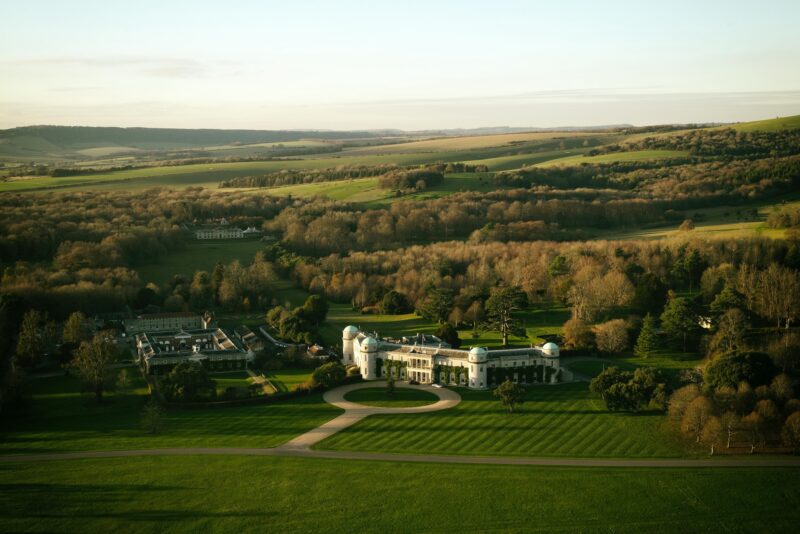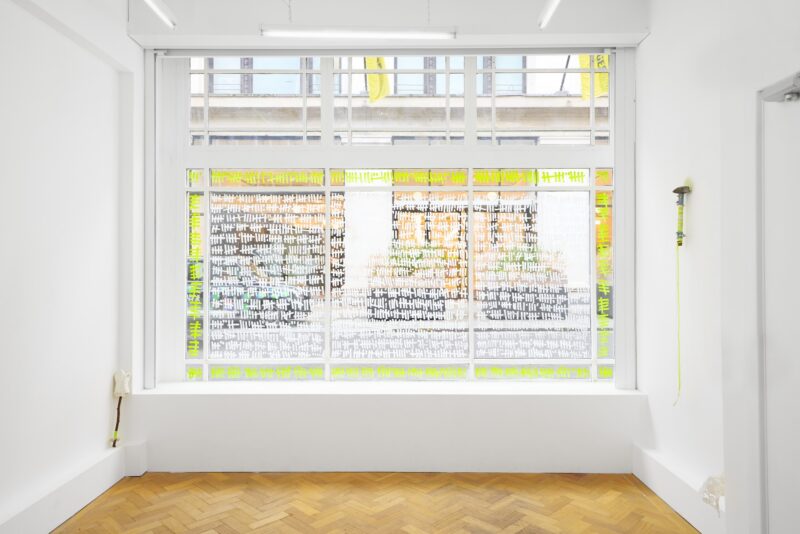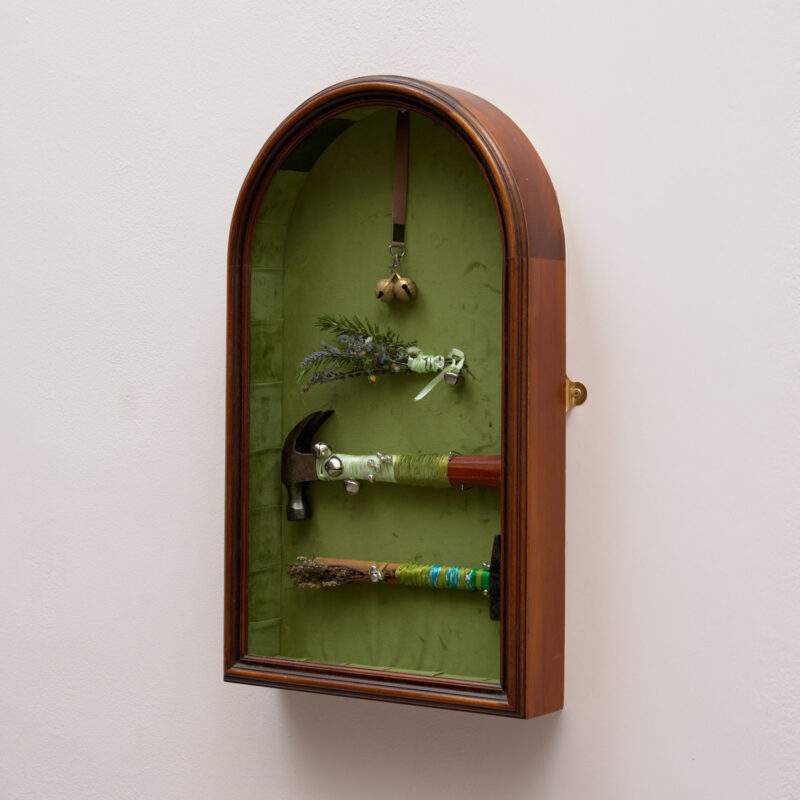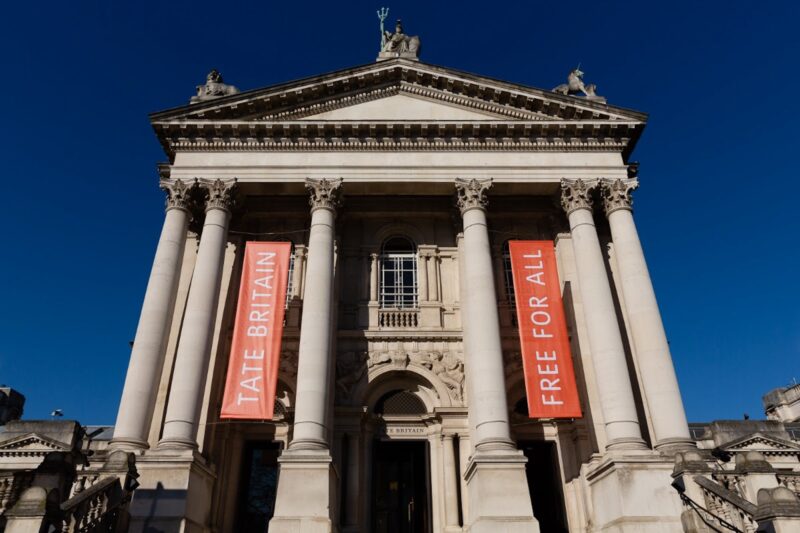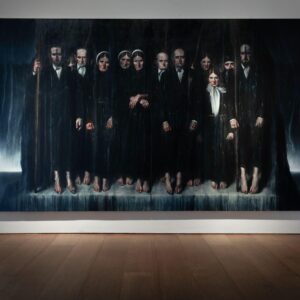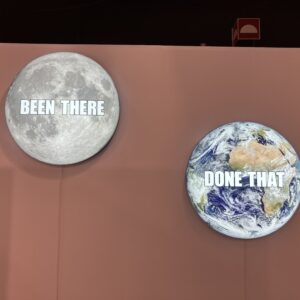Jesse Darling wins Turner Prize 2023, as we called it back in September (Who should win the Turner Prize 2023), the winner of the £25,000 prize was announced last night at a ceremony presented by Tinie Tempah at Eastbourne’s Winter Garden, adjacent to Towner Eastbourne, the hosts of this year’s prize.
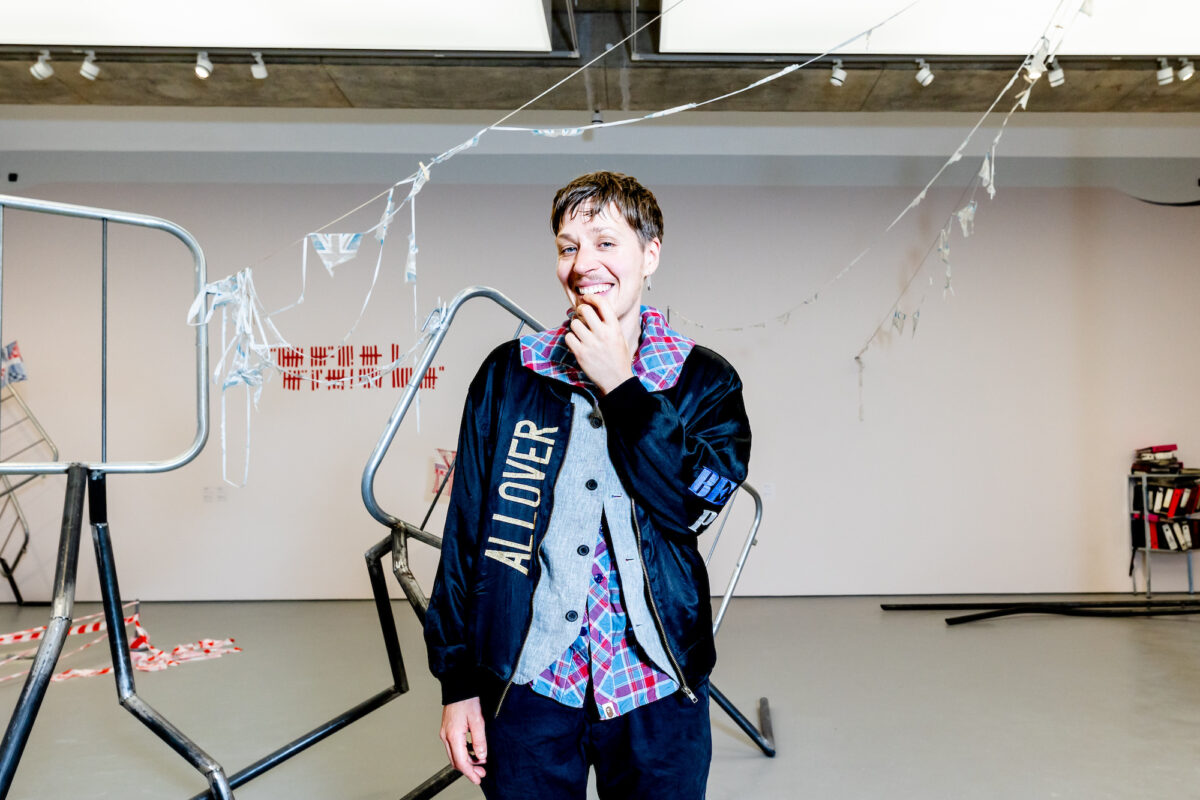
If you go to Towner to see the exhibition of all the finalists for this year’s Turner Prize you should definitely watch the artist films on the ground floor – there is also a link to Jessie’s film below.
The prize was awarded to Jesse Darling for his recent practice encompasses sculpture, installation, text and drawing. The jury commended his use of materials and commonplace objects like concrete, welded barriers, hazard tape, office files and net curtains, to convey a familiar yet delirious world. Invoking societal breakdown, his presentation unsettles perceived notions of labour, class, Britishness and power.
Darling’s presentation for the Turner Prize—which aims to promote public debate around new developments in contemporary British art—speaks directly to the prevailing crisis and confusion present in Britain today.
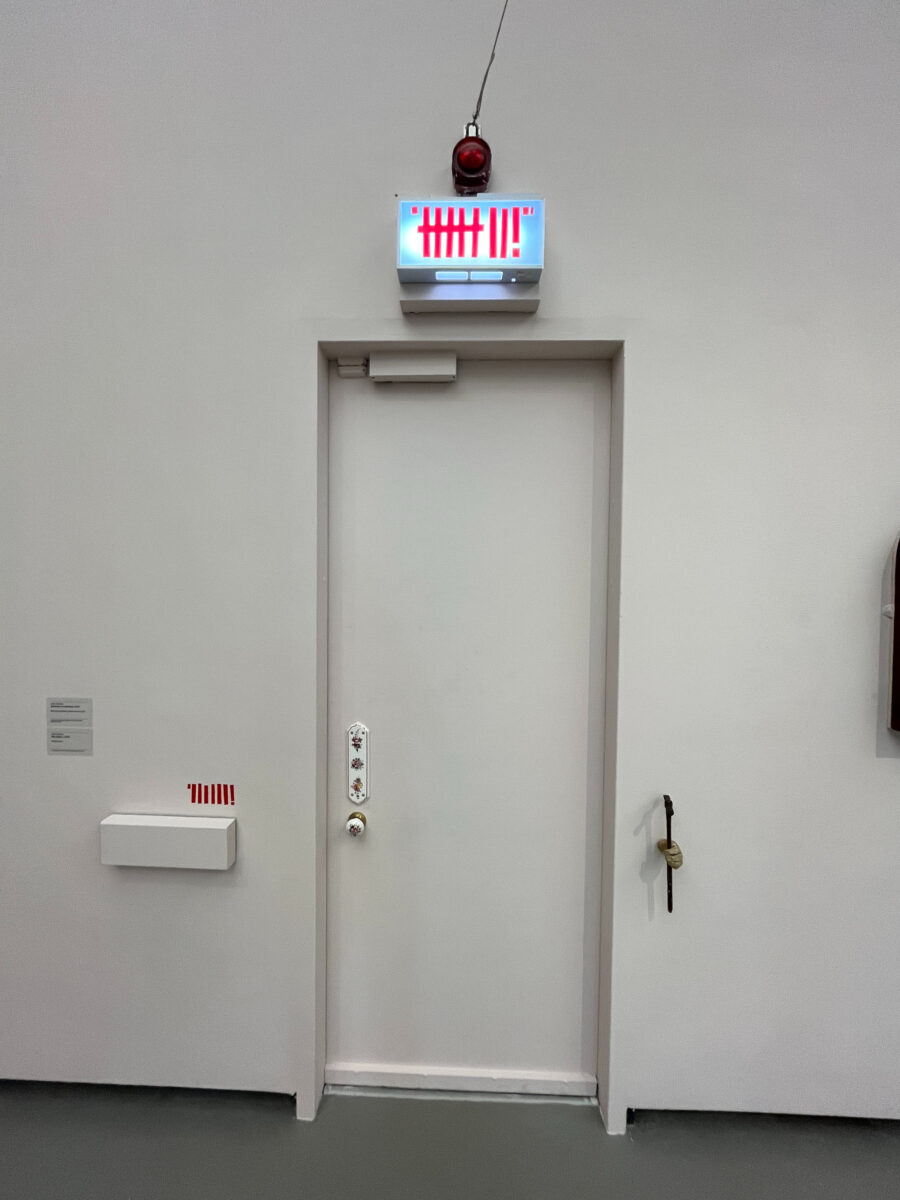
The work captures all the complexity and strangeness of this moment while embodying the playfulness and compassion that has been an enduring fixture of Darling’s practice. His work has consistently anticipated and attended to the crises of care, the precarity of state infrastructure, and the parochialism of Empire. At the core of his work is a reflection on what it means to be human navigating the world we face today, in all its messiness.
He was nominated for Turner Prize 2023 for No Medals No Ribbons, a major solo exhibition of work from the past ten years presented at Modern Art Oxford, 2022, as well as Enclosures at Camden Art Centre, 2022, an exhibition of new works resulting from the prestigious Freelands Lomax ceramics residency. Taking its title from the eighteenth-century Enclosures Act which ended the rights of common land, the exhibition reckoned with the ongoing privatisation of space and public services in Britain, and the way this has shaped the social landscape.
On the occasion of the Turner Prize, Arcadia Missa has published SHOWGIRLS, with Chapter NY, Molitor, and Sultana—a publication that chronicles Jesse Darling’s road trip across the UK. Passing through seaside towns, container ports, service stations, retail parts and an abandoned airport, this is a journey that encounters at every turn the barriers and borders (both physical and invisible) of modern Britain. The movie on which the publication is based has been produced by Tate, watch it here.
One of the best-known visual arts prizes in the world, the Turner Prize aims to promote public debate around new developments in contemporary British art. The prize is awarded to an artist born or based in the UK, for an outstanding exhibition or presentation of their work in the past twelve months. The shortlisted artists for 2023 were: Jesse Darling, Ghislaine Leung, Rory Pilgrim and Barbara Walker.
The members of the Turner Prize 2023 jury are Martin Clark, Director, Camden Art Centre; Cédric Fauq, Chief Curator, Capc musée d’art contemporain de Bordeaux; Melanie Keen, Director of Wellcome Collection and Helen Nisbet, CEO and Artistic Director, Cromwell Place. The jury is chaired by Alex Farquharson, Director, Tate Britain.
An exhibition of the four shortlisted artists is at Towner Eastbourne until 14th April 2024. It is curated by Noelle Collins, Exhibitions and Offsite Curator at Towner Eastbourne. This year’s prize is presented as part of Towner 100, a year-long celebration of arts and culture across Eastbourne and Sussex marking the centenary of Towner Eastbourne.
Turner Prize 2023, 28th September 2023 – 14th April 2024 Towner Eastbourne
About the artist
Jesse Darling was born in Oxford in 1981. Darling studied at Central Saint Martins, University of the Arts London and completed an MFA at Slade School of Fine Art, University College London in 2014. In 2021, he released his first collection of poetry, Virgins, Monitor Books (Salford, UK). Jesse Darling is 41 and lives and works in Berlin.
Darling works in sculpture, installation, video, drawing, sound, text and performance, using a ‘materialist poetics’ to explore and reimagine the everyday technologies that represent how we live. Darling has often combined industrial materials such as sheet metal and welded steel with everyday objects to explore ideas of the domestic and the institutional, home and state, stability and instability, function and dysfunction, growth and collapse. The acknowledgment of a shared vulnerability inherent in both the individual and the collective body are important considerations in Darling’s practice.
Darling was nominated for his solo exhibitions No Medals, No Ribbons at Modern Art Oxford and Enclosures at Camden Art Centre. No Medals, No Ribbons was the largest presentation of the artist’s work to date, in which a freewheeling series of consumer goods, liturgical devices, construction materials, fictional characters and mythical symbols – detached from their own taxonomies and standing in for bodies – proposed alternative ways of thinking and being. A rickety full-sized roller coaster, bent into the skeletal form of a woolly mammoth, evoked parallel histories of extraction, leisure and the museum; an army of plastic bags for cheap chain stores marched in place on steel legs like soldiers; mobility aids, bent into strange shapes, slump and crawl across the floor. These works and others, spanning ten years of his practice, highlighted how systems of power such as government, religion, ideology, technology and empire, can be as fragile and contingent as living things.
Darling was the fourth recipient of the Camden Art Centre Freelands Lomax Ceramics Fellowship and the resulting exhibition Enclosures was the culmination of research developed over two years. The exhibition title references the historic Inclosures Act, by which the common lands of Britain were made private property by a ruling class. Darling used his fellowship to explore the histories of extraction, exhumation, property and territory, and to consider clay as a material formed from the architectural, ancestral, cultural, and corporeal bodies of our material world.
Other solo exhibitions include: Miserere, St James’s Piccadilly, London (2022); Gravity Road, Kunsteverein Freiburg, Germany (2020); Crevé, Triangle France – Astérides, Marseille, France (2019) and The Ballad of Saint Jerome, Art Now, Tate Britain, London (2018).
Group exhibitions include: Exposed, Palais de Tokyo, Paris, France (2023); Trickster Figures: Sculpture and the Body, MK Gallery, Milton Keynes, UK (2023); Barbe à Papa, CAPC Bordeaux, France (2022); Drawing in the Continuous Present, The Drawing Center, New York, US (2022); WALK!, Schirn Kunsthalle Frankfurt, Germany (2022); Crip Time, MMK Museum für Moderne Kunst, Frankfurt (2021); A Fine Line, Kunsthalle Bremen, Germany (2020); Transcorporealities, Museum Ludwig, Cologne, Germany (2019) and May You Live in Interesting Times, 58th Venice Biennale, Venice, Italy (2019).
